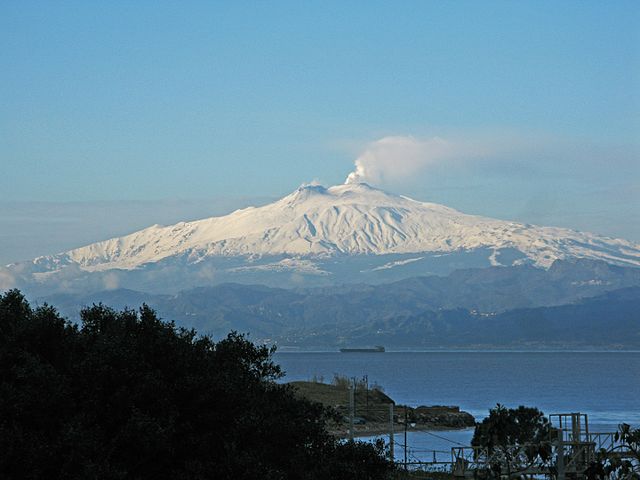Teaming for Interdisciplinary Research Pre-Seed Program
BIO-VOLCANO: Rocks, soils, and bioaccumulators as predictors of volcanic eruptions

BIO-VOLCANO: Rocks, soils, and bioaccumulators as predictors of volcanic eruptions

Photo by Jacopo Werther, Creative Commons Attribution-Share Alike 4.0 International license.
Our interdisciplinary BIOVOLCANO project strives to integrate geological and biological systems to answer critical questions related to volcanic activity. The key challenge for volcanologists is to accurately forecast the likelihood (when?), magnitude (how big?), and style (how?) of volcanic eruptions. This year, for instance, Mt Etna (Italy), the largest volcano in Europe with >1M people living in its shadow, has produced 55 paroxysms with large volumes of volcanic ash and gases. Understanding the causes and consequences of magma unrest, though incredibly challenging, is vital for >800M people living near volcanoes worldwide. Volcanoes are especially large emitters of harmful metals in the environment, such as mercury (Hg), which is highly volatile with >1-year residence time and accumulates in many organisms. There is a positive correlation between volcanic eruption magnitude and Hg in organisms (Fig. 1). Hg is transported by volcanic gases, melt/glass, and minerals, and rapidly accumulates in plants, insects, microbes, and soils. We propose to assemble a unique interdisciplinary team of scientists with diverse expertise in geology, soil science, plant biology, entomology, and microbiology, and with advanced skills in fieldwork in restless volcanic areas, high-resolution analyses, and computational simulations. We aim to determine the relationships between Hg in volcanic rocks, gases, and bioaccumulators and the magnitude of volcanic eruptions to create diagnostic tools for monitoring volcanic activity. With this initiative, we plan to address this central hypothesis: the level and rate of Hg accumulation in volcanic rocks and organisms are positively correlated with the magnitude of volcanic eruptions. To this goal, we will organize round table discussions aimed to design the research work of BIO-VOLCANO: 1) identifying the sites at Mt Etna, which is one of the greatest emitters of Hg in the world (>105 ng/m3), 2) strategizing the collection of samples (volcanic ash, samples of trees, ground beetles, and soil horizons enriched in organic matter and clays hosting biosorbent microbes), 3) planning the analyses with advanced facilities to determine total Hg and methyl-Hg concentrations, 4) processing the data using machine learning algorithms and support vector machines to identify the best predictors of Hg at various spatial and temporal scales, and 5) planning the cohort of undergraduate and graduate students, particularly from underrepresented groups, who will participate in the project. Along with existing techniques monitoring volcanic precursors, results from this project tightly linking biota with geological processes will create a novel set of geo- and bioindicators for predicting the magnitude of volcanic eruptions.
Team Lead
Mattia Pistone
Department of Geology
mattia.pistone@uga.edu
Team Members
Caterina Villari
Warnell School of Forestry & Natural Resources
Paul Schroeder
Department of Geology
Brittany Barnes
Warnell School of Forestry & Natural Resources
Kamal Gandhi
Warnell School of Forestry & Natural Resources
Aaron Thompson
Department of Crop and Soil Sciences
Megan DeMarche
Department of Plant Biology
Elizabeth Ottesen
Department of Microbiology
Alexander Cherkinsky
Center for Applied Isotope Studies
Sarah Jantzi
Center for Applied Isotope Studies
Xiaoyu Xu
Savannah River Ecology Laboratory
